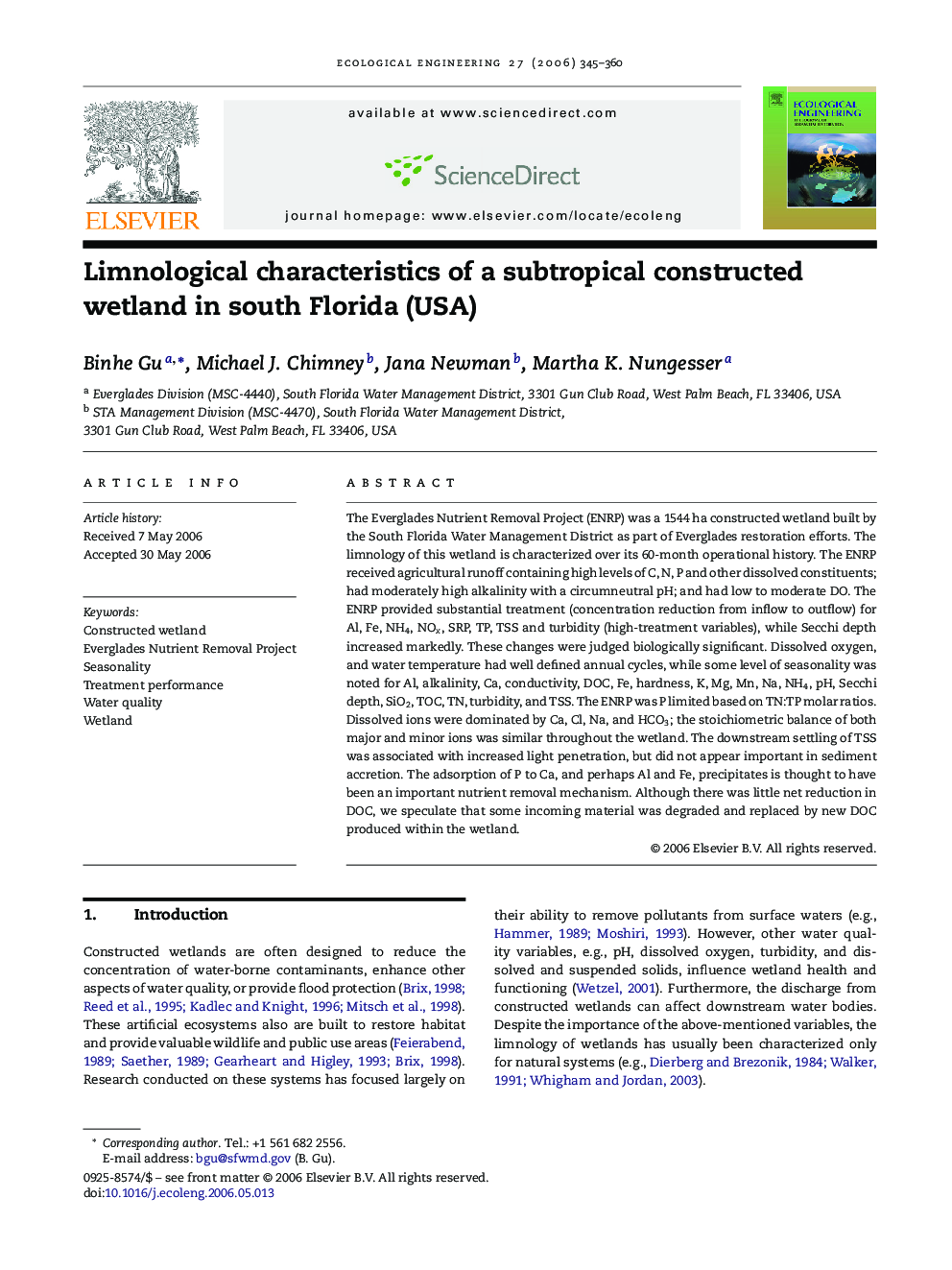| Article ID | Journal | Published Year | Pages | File Type |
|---|---|---|---|---|
| 4391238 | Ecological Engineering | 2006 | 16 Pages |
The Everglades Nutrient Removal Project (ENRP) was a 1544 ha constructed wetland built by the South Florida Water Management District as part of Everglades restoration efforts. The limnology of this wetland is characterized over its 60-month operational history. The ENRP received agricultural runoff containing high levels of C, N, P and other dissolved constituents; had moderately high alkalinity with a circumneutral pH; and had low to moderate DO. The ENRP provided substantial treatment (concentration reduction from inflow to outflow) for Al, Fe, NH4, NOx, SRP, TP, TSS and turbidity (high-treatment variables), while Secchi depth increased markedly. These changes were judged biologically significant. Dissolved oxygen, and water temperature had well defined annual cycles, while some level of seasonality was noted for Al, alkalinity, Ca, conductivity, DOC, Fe, hardness, K, Mg, Mn, Na, NH4, pH, Secchi depth, SiO2, TOC, TN, turbidity, and TSS. The ENRP was P limited based on TN:TP molar ratios. Dissolved ions were dominated by Ca, Cl, Na, and HCO3; the stoichiometric balance of both major and minor ions was similar throughout the wetland. The downstream settling of TSS was associated with increased light penetration, but did not appear important in sediment accretion. The adsorption of P to Ca, and perhaps Al and Fe, precipitates is thought to have been an important nutrient removal mechanism. Although there was little net reduction in DOC, we speculate that some incoming material was degraded and replaced by new DOC produced within the wetland.
